How to Build a Haunted House
Constructing chills and building liminal beauty in House (2007), a wordless graphic novel by Josh Simmons
House? It’s more of a mansion, really. Maybe even a chateau, a palatial country estate fallen to ruin among the trees. It seems to grow an extra storey of broken windows every time you look up at it. Turn a corner and you’re walking down a row of boarded doorways, more like an abandoned street than a single residence.
This is no gothic cathedral with graves on the lawn and bats in every belfry. It’s just some curious shamble of New England brickwork, its dripping beams and gaping roofs barely held together by cobwebs and ivy. Less house of horrors, more oasis of intrigue.
You can’t see any roads around here. What was this place? How did it come to be huddled among these trees, like the wood itself sprang up to protect this place from civilisation?
To all such questioning House (Fantagraphics, 2007) remains perfectly silent, a pervasive hush that is key to the eerie pleasures of this wordless 80-page black-and-white graphic novel by American writer/artist Josh Simmons. The book plays narrative Will-o’-the-wisp, keeping its secrets juuuuuust out of reach and thus luring readers into the blackest pits of Hell.
We know next to nothing about the sallow young backpacker with the mullet and the creepy little moustache whom we followed into this neck of the woods. Just as obscure are the two girls he meets on a smoke-break under the eaves: a sour goth girl and her cheerfully adventurous pal.
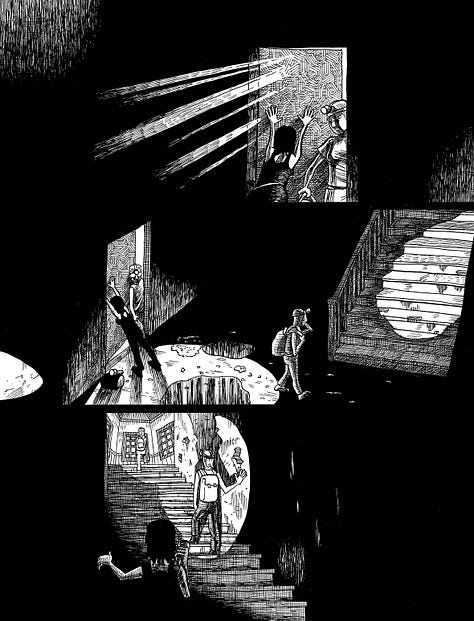
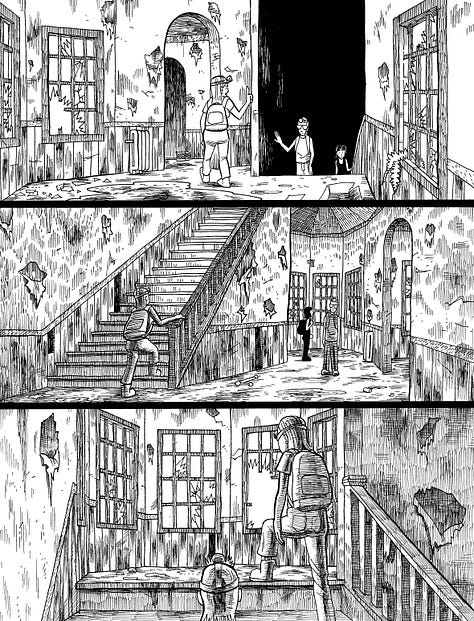
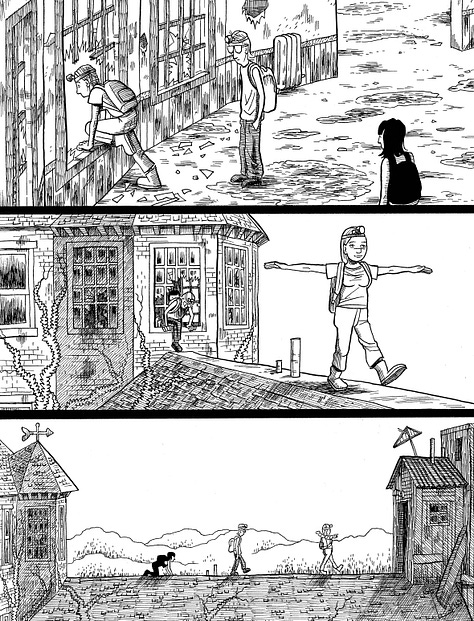
They team up and venture inside, exploring the peeling hallways and uncovering an abyssal sinkhole (recalling William Hope Hodgson’s 1908 classic weird novella The House on the Borderland) surrounded by toppled towers and sunken clapboard cottages chained to the rubble as if to prevent them from getting back up again.
Then there’s the portrait of a glowering patriarch hanging above a bricked-up fireplace. A legendary mariner? Military tyrant? Former owner? Whoever he was, his portrait is the only thing in this place untouched by decay, guarding a strange little door off to one side, ominously barricaded.
But the explorers have come this far, right?
House was Josh Simmons’ debut graphic novel, nominated for a 2007 Ignatz Award and took three years to draw. His later work (all for Fantagraphics) includes two gonzo horror anthologies The Furry Trap (2012) and Flayed Corpse and Other Stories (2018), post-apocalyptic graphic novel Black River (2015) and his ongoing project Jessica Farm (2000-), a surreal psychodrama drawn at a rate of a page a month and to be completed sometime in 2049.
House is a more modest project, its terrors more enclosed and subtle, though – like the best of horror mangaka Junji Ito – it’s as unnerving as a face peering out of your sock drawer at 2am.
As a horror story it doesn’t get its fangs into you through the artifice of plot, or gothic tropes like vampires and madmen. Nothing here feels artificial or story-like. There’s no irony, just indifference. Simmons’ precise, matter-of-fact line feels cooly photographic. He keeps his figures at a distance with almost no close-ups.
His characters aren’t horror movie characters doing horror movie character things, imperilling themselves in service of an ever-ratcheting plot. Instead, they act in naturalistic spurts of curiosity, jealousy, desire, guilt and greed, as each of them dwindle into their own oubliette of despair.
Nothing feels contrived, yet House is meticulously paced and makes a calculated use of black space for ominous scene transitions or constricting the panels as the light fades and darkness closes in. The second half of the book is like potholing with a dying flashlight. Claustrophobics, beware. Simmons isn’t entirely coy with his phantoms, either, giving us just enough glimpses of a lurking something for us to know that it’ll still be there when the lights go out.
The absence of dialogue is another magnetic device, compelling you to slow down and comprehend the nuance of each panel. House should be a focused 15-minute meditation. Don’t waste it with a skim-read.
The dubious hobby of wandering around collapsing, asbestos-perfumed buildings has found a natural home on YouTube where the ‘urban exploration’ genre often cross-pollinates with the ‘ghost video’ and the trend for liminal horror such as Kane Pixel’s The Backrooms (2022) and The Rolling Giant (2023), and Jared Pike’s Backrooms-inspired The Poolrooms (2022).
Predating these seminal videos by fifteen years, House echoes the same feelings of nostalgia, of a listless generation searching for authentic connection, of feeling trapped within an endless, broken system.
But there’s beauty here too.
House finds moments of joy and tranquillity (a spontaneous pool-dive, a rooftop sunset). One of the few close shots in the book occurs when the boy first discovers the house nestled in the trees. He’s smiling like he’s finally found a friend.
Simmons and his Gen Z descendants all love the merciful stillness offered by liminal spaces. In a world of addictive doom-scrolling, perma-catastrophe, 24/7 connectivity and zero privacy, who doesn’t yearn for a space in which no one can hear you scream?
Stay weird.
House is available from The Mansion Press.
If this post got you smiling, thinking or ready to create, then please…
Or…
Every drop of reader support helps this project grow!




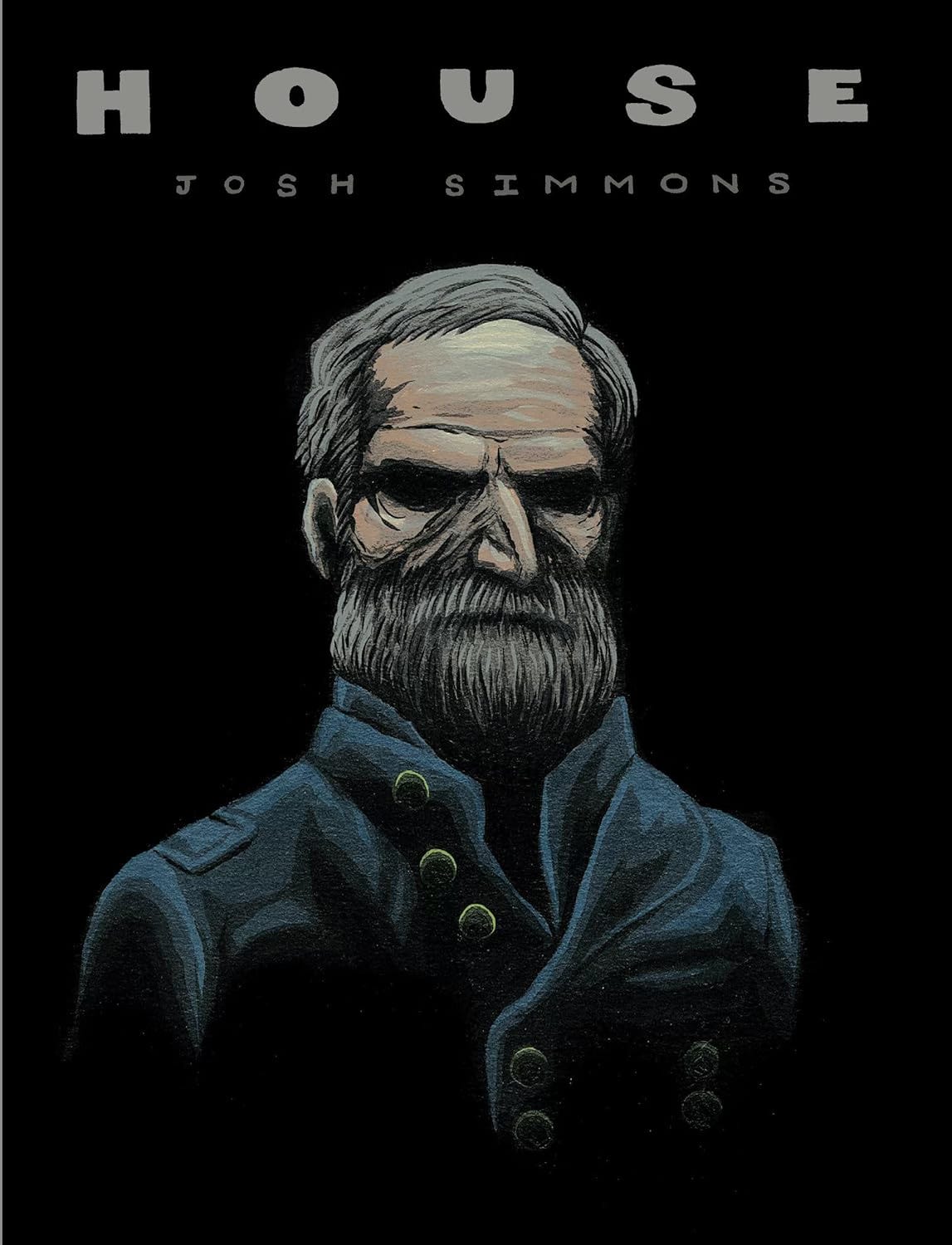
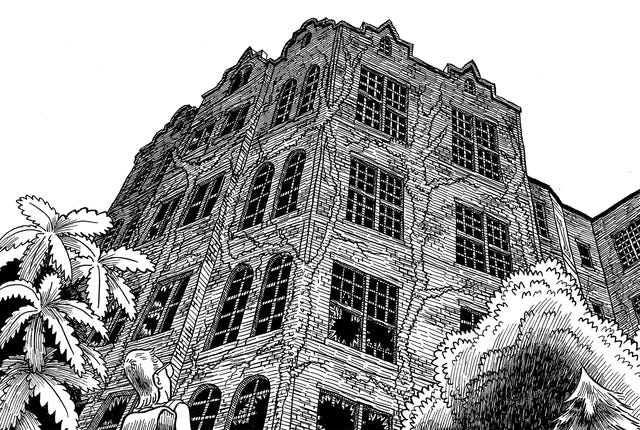
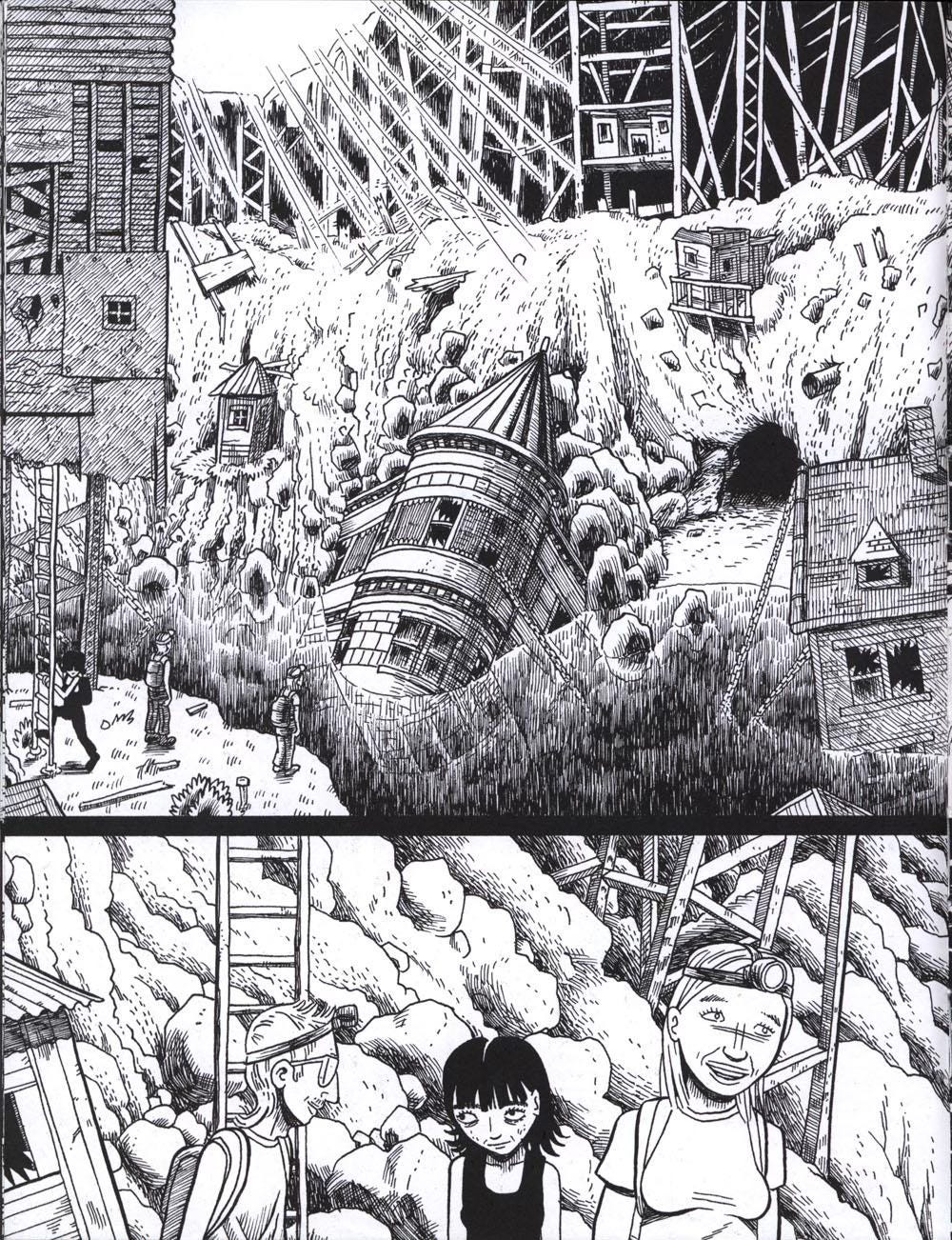


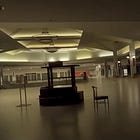

Dang those eyes spook me!
I’m Harrison, an ex fine dining industry line cook. My stack "The Secret Ingredient" adapts hit restaurant recipes (mostly NYC and L.A.) for easy home cooking.
check us out:
https://thesecretingredient.substack.com
Thanks for this great intro